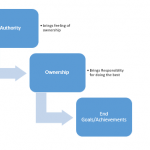Assignment Chapter 20
Assignment Chapter 20
- 543: Discussion Questions: 2, 8;
2) Distinguish between in-process inventory, safety stock inventory, and seasonal inventory.
In-process inventory: In the life cycle products may be in the manufacturing during its early stages. Companies do keep a track of these products as its inventory called in-process inventory.
Safety-stock inventory: in the consumer market, there is a demand for a product. The company has to make sure that they keep a certain amount of inventory that will respond to the consumer demand no matter what is the status of the product in manufacturing cycle. This is called safety stock inventory.
Seasonal Inventory: During different festivals and seasons, a demand for a certain product may suddenly increase. Seasonal inventory is kept to correspond to such demands.
8) Which type of inventory system would you use in the following situations?
- Supplying your kitchen with fresh food.
I keep a track of different items at my kitchen and buy them when the stock is low. Therefore, I would use order quantity.
b. Obtaining a daily newspaper.
You need a newspaper one after the other. Periodic model would be appropriate for such an inventory.
c. Buying gas for your car.
The fuel tank of my car can accommodate a certain amount of gas. Therefore, a hybrid type model would be efficient.
To which of these items do you impute the highest stockout cost?
If there is no more gas in my car, it would be the highest stockout cost as gas is not available just anywhere.
- 545: Objective Questions: 10, 13.
10) You are a newsvendor selling the San Pedro Times every morning. Before you get to work, you go to the printer and buy the day’s paper for $0.25 a copy. You sell a copy of the San Pedro Times for $1.00. Daily demand is distributed normally with mean 5 250 and standard deviation 5 50. At the end of each morning, any leftover copies are worthless and they go to a recycle bin.
- How many copies of the San Pedro Times should you buy each morning?
Cost of underestimating = $1 – $0.25 = $0.75
Cost of overestimating the demand = $0.25
Optimal Probability = Cost of Underestimating / (Cost of Overestimating – Cost of Underestimating)
Optimal Probability = 0.75 / (0.75 + 0.25)
Optimal Probability = 0.75
Applying the NORMSINV function on 0.75,
Value of z = 0.674
Now, the number of copies of SD time that should be purchased each morning = Daily demand of newspapers + (Probability that newspapers are not being sold x Standard Deviation
The number of copies of SD time that should be purchased each morning = 250 + 0.674 X (50)
The number of copies of SD time that should be purchased each morning = 283.7= 284
- Based on part (a), what is the probability that you will run out of stock?
The optimal probability, as was found out in the above calculations is 75%, therefore, there is a 25% probability of newspapers running out.
13) Dunstreet’s Department Store would like to develop an inventory ordering policy of a 95 percent probability of not stocking out. To illustrate your recommended procedure, use as an example the ordering policy for white percale sheets. Demand for white percale sheets is 5,000 per year. The store is open 365 days per year. Every two weeks (14 days) inventory is counted and a new order is placed. It takes 10 days for the sheets to be delivered. Standard deviation of demand for the sheets is five per day. There are currently 150 sheets on hand. How many sheets should you order?




